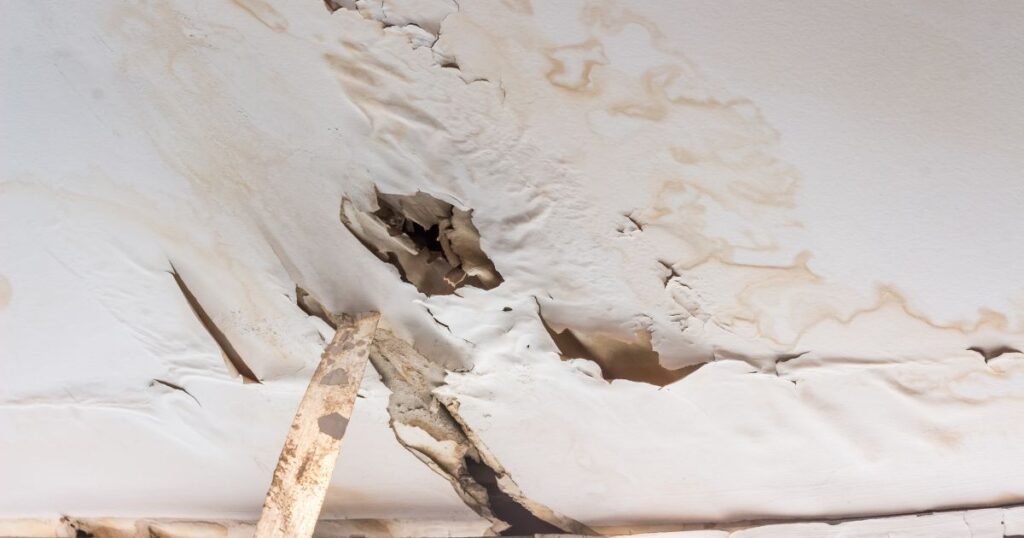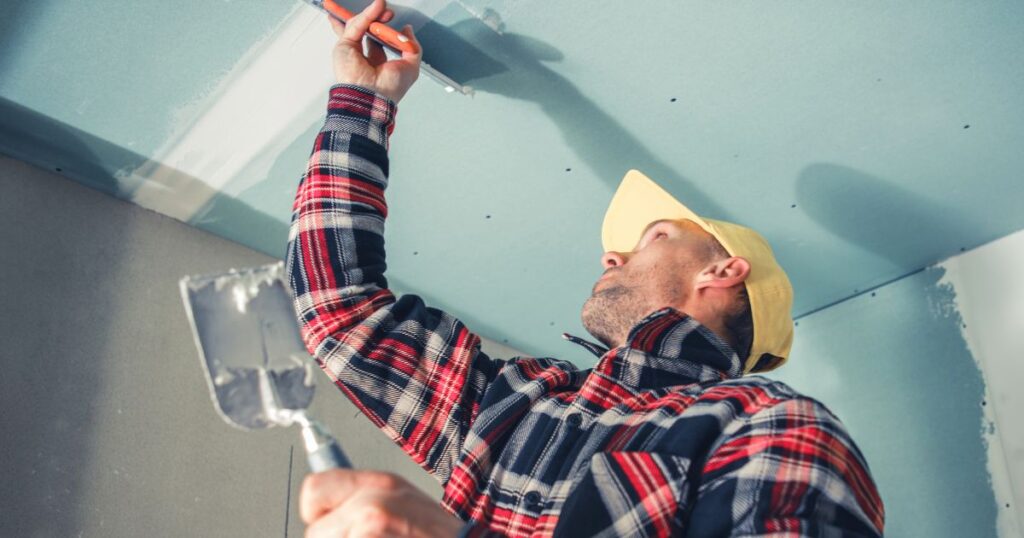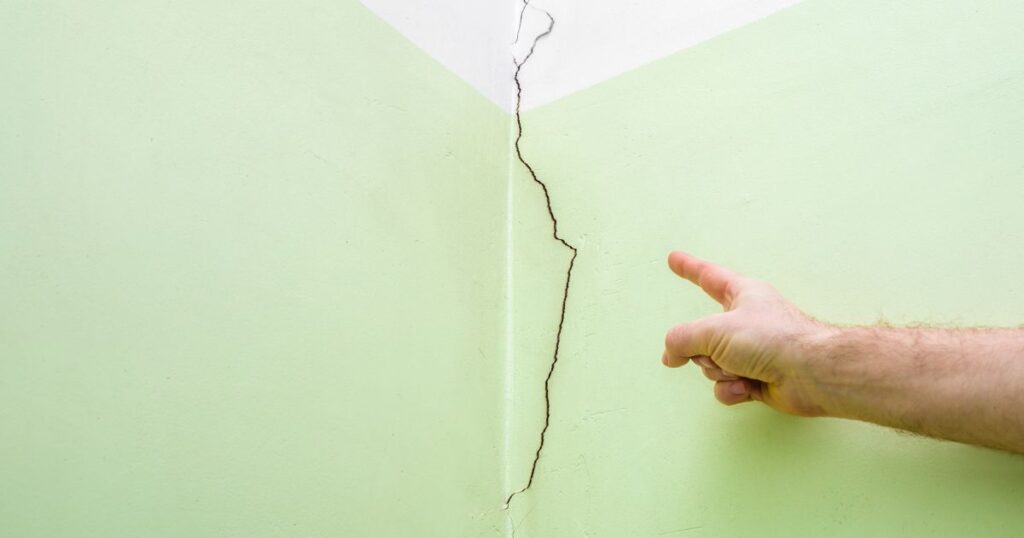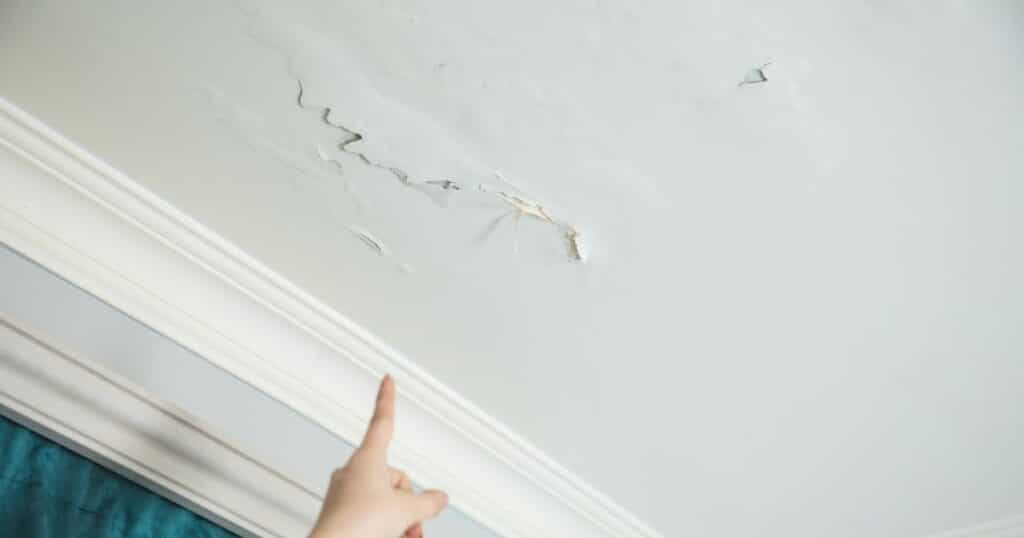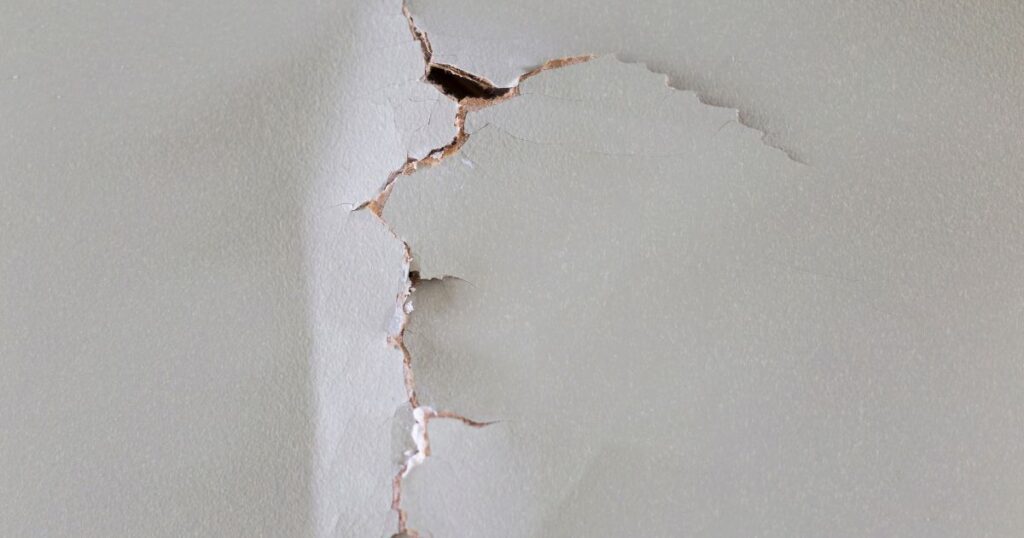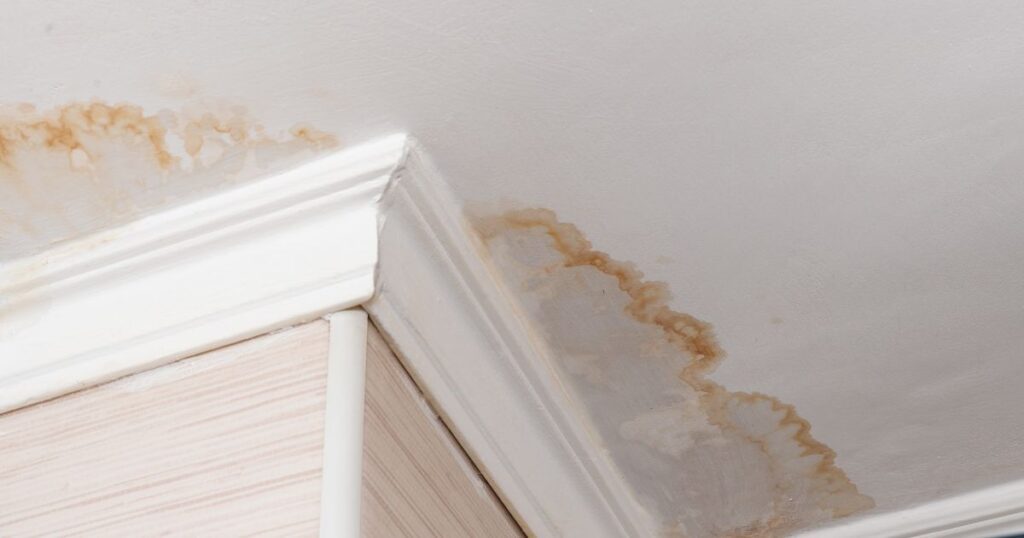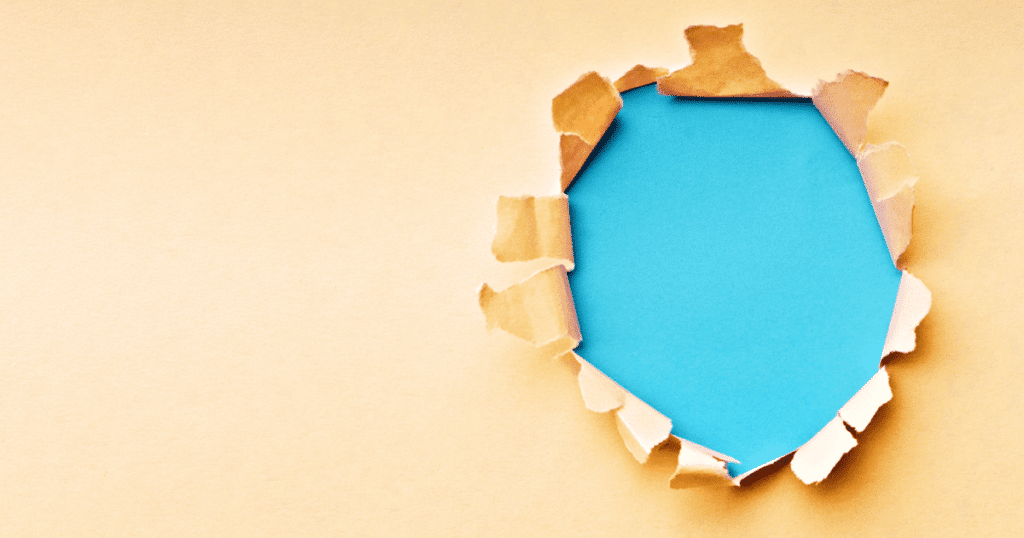
Why Maintaining Drywall is Crucial
Drywall is an essential part of any home or building’s construction. It provides insulation, soundproofing, and fire resistance, making it one of the most popular materials in modern architecture. However, while drywall has many benefits, it still needs to be maintained regularly.
A well-maintained drywall can make a significant difference in the overall aesthetics of a room. Not only does it look good when first installed, but it also helps maintain a clean and healthy environment by preventing mold growth and eliminating dust buildup.
That’s why regularly maintaining and repairing your drywalls is crucial. In this article, we’re going to focus on one specific issue that commonly occurs with drywalls: torn paper.
Torn paper is a common problem that can significantly affect your walls’ overall appearance if not appropriately addressed. In the following sections, we’ll break down everything you need to know about repairing torn drywall paper to help you maintain your walls’ look and feel.
Learn how to repair torn drywall paper in this detailed guide. Fixing it yourself is easy with our step-by-step process. Save money and time!
The Significance of Repairing Torn Drywall Paper
Torn drywall paper may seem like a minor issue at first glance; however, it can quickly turn into something more significant if left unaddressed. When drywall paper tears or rips off from the wall surface, it exposes the underlying gypsum core material to elements like moisture and air. Over time these elements penetrate through this exposed area corroding and weakening its structure, causing further damage to your wall.
Furthermore, unsightly tears on walls can be quite frustrating for homeowners trying to keep their homes looking good as new. Such compromised areas are more susceptible to scrapes or bumps, which may end up causing further ripping or tearing of the damaged area.
If left unrepaired for too long or patched inappropriately where all layers aren’t fully restored again (drywall finish), then ugly patchwork that may require full wall restoration can become inevitable. Therefore, it’s crucial to repair torn drywall paper as soon as possible to avoid such circumstances.
Why DIY Repairs Are Often Best
While hiring a professional is always an option, handling small issues like repairing torn drywall paper by yourself is the best approach. Why?
It gives you complete control and provides an opportunity for learning and self-development. There’s no need to spend lots of money on what some may consider basic repairs that they could deal with by themselves.
Besides, who knows your home better than you? It’s always best to handle things in a way that suits your tastes and preferences while at the same time maintaining your budget-friendly approach.
DIY repairs also allow homeowners to be in control of all aspects, from preparing drywall for painting, choosing the best way to patch torn drywall paper, applying joint compounds, or even sanding down freshly patched areas before painting over them. Doing it yourself not only saves money but also offers an opportunity for creativity and experimentation.
Understanding Drywall Paper
What is Drywall Paper, and Why Should You Care?
Drywall paper is a crucial component of any well-constructed wall, and it plays a significant role in ensuring that your home or building remains structurally sound for years to come. It is made up of several layers of gypsum board, with a layer of paper on either side. The purpose of the paper is to hold the gypsum board together while also creating a smooth surface for painting.
The Causes and Consequences of Drywall Paper Tears
Unfortunately, drywall paper tears are all too common in most homes, especially those that experience high levels of traffic or have children or pets running around. These tears can be caused by anything from accidental bumps to roughhousing games – even improperly hanging pictures or heavy mirrors can cause damage over time.
If left unchecked, these small tears can quickly turn into larger ones, leaving you with unsightly walls that are difficult to repair without professional help. Additionally, torn drywall paper can compromise the integrity of your walls by allowing moisture and pests to penetrate through them.
Preventing Drywall Paper Tears
While it may be impossible to completely avoid drywall paper tears, there are steps you can take to minimize their occurrence. First and foremost, it’s important to practice good drywall maintenance habits by regularly inspecting your walls for signs of damage and addressing any issues as soon as they arise. You should also take care when hanging heavy objects on your walls; use appropriate anchors when necessary instead of hammering nails directly through the wall’s surface.
Consider investing in protective corner guards if you have children or pets who might be prone to running into walls. By staying vigilant about drywall maintenance and taking preventative measures where possible, you can avoid costly repairs down the road while ensuring that your home looks great for years to come.
Assessing the Damage: How to Deal with Ripped Drywall Paper?
Drywall maintenance is an essential aspect of DIY home improvements. One of the most common problems people face with their drywall is ripped drywall paper.
But what causes drywall paper tears? Factors such as moisture, humidity, temperature changes, and age can all play a role in damaging walls.
The first step in repairing damaged walls is assessing the damage. To do this, you need to identify whether or not you have torn drywall paper.
Look for bulges or bubbles on the surface of your wall. If you notice any uneven spots that feel soft or spongy to the touch, this could indicate that there’s ripped drywall paper underneath.
However, you should be careful when assessing the damage to avoid causing further damage. Avoid using sharp objects such as knives or scissors to peel back the layers of paint and wallpaper, as it could create more rips and tears on your wall’s surface.
DIY Drywall Repair: Preparing Drywall for Painting
Once you’ve identified a torn drywall paper, it’s time to fix it! But can I fix torn drywall paper myself? Yes!
DIY drywall repair isn’t rocket science; anyone can do it with the proper tools and techniques. Before starting any repair work, preparing damaged drywalls before painting is crucial.
- Use sandpaper to remove any flaking paint or debris around the torn area.
- Start with grit 120 sandpaper for minor flaws and gradually move up in grit size until reaching 320-grit sandpaper for smoothing out every imperfection.
- Then clean your wall thoroughly by wiping it down with a damp cloth; if there’s still dirt left after wiping it down with water, only use some mild detergent in the water mixture (1 part dish soap + 4 parts water).
- Let everything air-dry before moving on to the next step.
Drywall Repair Techniques: Drywall Patching Tips
After preparing drywall for painting, it’s time to start repairing the torn drywall paper. One of the most effective and straightforward drywall repair techniques is using a joint compound. Apply some joint compound over the damaged area using a putty knife or trowel.
Smooth out any bumps or bubbles with a wide knife, then apply another layer of joint compound over repaired drywalls before painting. Let everything air-dry for at least 24 hours before sanding and smoothing out any remaining imperfections.
Patching damaged drywall isn’t rocket science; anyone can learn how to do it with proper tools (such as sandpaper, a putty knife/trowel, and a joint compound). By following these simple steps, you can save money on professional repair costs while restoring your wall to its former glory.
Gathering Materials:
List of Materials
The first thing to consider when repairing your torn drywall paper is what materials you will need. It’s important to have everything on hand before beginning your project so you don’t have to make any unnecessary trips to the store.
The best way to patch torn drywall paper is by gathering all necessary materials and tools in one place before starting the repair process. Some of the essential items for drywall repair include sandpaper, a putty knife, joint compound, mesh tape or paper tape, and a paintbrush.
Creative Alternatives
If you don’t have access to these traditional materials or tools, there are still several creative alternatives that you can use. For example, some people have found success using toothpaste as a quick fix for small holes in their walls!
Toothpaste can be used as a temporary solution until you get your hands on some joint compound. Another alternative material that you can use is baby powder mixed with water.
This mixture can be applied over the torn drywall paper and smoothed out with a putty knife. Once it dries completely, it can be sanded down and painted over.
If you’re really in a pinch for time or money, consider using duct tape as a temporary fix until you have access to the proper materials. While this won’t look great aesthetically speaking and will likely leave residue behind once removed – but it’s better than leaving ripped drywall exposed.
When it comes down to it, having access to proper tools and materials is essential for repairing damaged walls properly. It’s tempting to take shortcuts by trying creative alternatives like toothpaste or baby powder mixed with water; however, ultimately, these are just temporary solutions that may end up leaving more work in the long run. The most reliable way of fixing ripped drywall paper is by using traditional tools like joint compound and mesh tape. Remember, if you need help with home repair and maintenance, it’s always best to call in a professional!
Preparing the Surface: Don’t Skip This Crucial Step
Repairing Damaged Walls: Why Preparation is Key
Before starting any repair work on your drywall, it’s essential to prepare the surface properly. Neglecting this step could result in a shoddy repair job that will be noticeable for years to come.
When you take the time to prepare your drywall properly, you’ll help to ensure a seamless and professional-looking repair. One of the first things you should do when preparing your wall for repair is to clean the area thoroughly.
Use a damp cloth or sponge to wipe away any debris or dust from the surface of your drywall. This will help ensure that any adhesive or joint compound you apply will adhere properly and evenly.
Preventing Drywall Paper Tears: The Importance of Smoothing Out
Another crucial step in preparing your drywall for repair is smoothing out any rough spots or uneven areas. If you fail to do this, it’s likely that tears and damage will occur again in no time at all.
Use sandpaper or a sanding block to smooth out any bumps or rough patches on the surface of your drywall. Take care not to over sand, as this can create an uneven surface that will be difficult to patch effectively.
Causes of Drywall Paper Tears: Addressing Underlying Issues
When repairing torn drywall paper, it’s important also to address any underlying issues that may have caused the damage in the first place. Common causes of drywall paper tears include humidity, water leaks, and general wear and tear over time. If you suspect that there may be underlying issues with your walls, it’s essential to address these before attempting any repairs.
This might include fixing leaks or installing additional ventilation systems in high-humidity areas such as bathrooms. By taking care of these problems first, you’ll help to ensure that your drywall repair job lasts for years to come.
Applying Joint Compound
Drywall Patching Tips: Make it Seamless
Now that you have assessed the damage and gathered all the necessary materials, it’s time to apply a joint compound over the damaged area. The key to making this repair look seamless is to apply the joint compound in thin layers, building up as you go along. This will ensure that the surface is level and smooth before painting.
As you’re applying the joint compound, be sure to feather out the edges of each layer by blending gradually with surrounding drywall surfaces. Use a wide putty knife or trowel and spread out a thin layer of joint compound over the damaged area.
Take care not to leave any air bubbles or pockets, as this can make sanding more difficult later. Remember – patience is key when applying joint compound!
Don’t rush through it; take your time and make sure each layer is completely dry before adding another coat. Otherwise, you run the risk of creating more problems than fixing them.
Drywall Repair Techniques: Match Texture & Patterns
When repairing drywall paper, one of the biggest challenges is matching textures and patterns with existing walls seamlessly. One way to address this issue is by using specialized tools like a texture roller or spray can for textured finishes like orange peel or popcorn surfaces.
For smooth surfaces, use fine-grit sandpaper lightly on the dried compound on top of each layer until it feels smooth to the touch, but don’t remove too much material, as this could make feathering more challenging later on. You may need to add an extra layer of joint compound if you notice any bumps or ridges from previous applications.
Using a damp sponge while sanding helps create a smoother finish while keeping dust levels low. If your wall has been painted for some time, using sponges may cause small bits of paint chips, so be careful when using one.
Best Way to Patch Torn Drywall Paper: Don’t Skimp on Quality
When it comes to repairing drywall paper, don’t skimp on quality materials. Cheap joint compounds or low-quality joint tapes could cause more problems than they solve.
Invest in good quality products that you trust and avoid the temptation of buying cheap alternatives. Cheap joint compounds are often runny and thin, take longer to dry, may shrink over time, and can be difficult to sand.
This could mean that the final outcome looks shoddy and unprofessional. Choose high-quality products with a good reputation for your repair project.
You’ll find that they are easier to work with, have a smoother finish, and will last much longer than cheaper alternatives. In any home repair or maintenance project like this one, you get what you pay for!
Sanding and Smoothing Out: Essential Steps in Repairing Torn Drywall Paper
The Importance of Sanding
If you want to restore your walls to their former glory, understanding drywall maintenance is key. Drywall repair techniques can be tricky, but with enough patience and effort, even beginners can patch damaged drywall and make it look as if nothing ever happened. In this article, we’ve already discussed some tools for drywall repair, such as joint compound and sandpaper.
Now let’s focus on one of the most important steps in repairing damaged walls – sanding. Drywall patching tips may vary according to experts’ opinions.
Some say that you don’t need to sand a small hole or tear in your drywall paper because the joint compound will cover it up nicely. Others argue that preparing drywall for painting requires a smooth surface free of bumps or ridges, which means sanding is essential before you start painting.
We believe that both arguments have some merit. However, when dealing with torn drywall paper, we consider sanding an essential step to achieving professional-looking results.
Sanding Carefully: How Not to Damage Surrounding Areas
When trying to deal with ripped drywall paper, some DIY enthusiasts may get overly excited about using their power tools and end up causing more damage than good. So before you start sanding your repaired area, make sure you know what you’re doing.
One of the best ways to patch torn drywall paper is by applying joint compound over the damaged area and then smoothing it out gently with a putty knife or trowel. After letting it dry overnight (or following the manufacturer’s instructions), take your 120-grit or 150-grit sandpaper (depending on how rough the surface is) and start sanding gently in circular motions until all bumps and ridges are gone.
Be careful not to sand too aggressively or over-sand an area, as this may cause further damage to the surrounding drywall. Moreover, be sure to wear a mask and goggles while sanding to avoid inhaling dust particles or getting debris in your eyes.
Best Way to Patch Torn Drywall Paper: A Smooth Finish
The goal of repairing damaged drywall before painting is to achieve a smooth surface that blends seamlessly with the rest of the wall. Therefore, sanding is crucial for achieving this result.
But how do you know when you’ve sanded enough? One way is by running your hand over the repaired area and feeling for any bumps or ridges.
If it feels smooth and even, then congratulations – you’ve done it! However, if you still sense some imperfections, repeat the sanding process until you’re satisfied with the results.
Remember that preparing drywall for painting takes time and effort but can save you a lot of money in the long run. By following our wall restoration tips and DIY home improvement advice, you can learn how to repair torn drywall paper like a pro and impress your family or guests with your newfound skills.
Painting Over Repaired Area How to Blend in the Repair
Patching damaged drywall is not enough. Even after you have fixed the torn drywall paper, you’ll still need to paint over it. But how do you make sure that it blends seamlessly with existing areas?
- First, ensure that the patched area has dried completely before painting. Drywall finishing techniques are essential for achieving a smooth surface. Sand down any excess compound using fine-grit sandpaper and wipe off any dust or debris with a damp cloth or tack cloth.
- Then, apply an oil-based primer over both the repaired area and surrounding wall surfaces. After priming, choose a paint color that matches your existing wall color as closely as possible.
- Paint over the patched area and feather outwards towards the surrounding areas using a small roller or brush. Repeat until you achieve an even finish.
Why Color Matching is Crucial
Repairing damaged walls can be frustrating, especially when it comes to matching paint colors correctly. However, ignoring this crucial step can leave your walls looking mismatched and shoddy. When preparing drywall for painting, always take into account lighting conditions in your room.
Different lighting sources can cause your paint colors to appear differently than they do under natural light. Avoid color-matching based on guesswork alone; instead, bring a swatch of your existing wall color to your local hardware store for advice on which hue will best match it. The Importance of Preparation
Wall repair before painting is critical if you want professional-looking results from DIY drywall repair projects. Repairing damaged drywall before painting ensures that any holes or cracks are filled in so that they don’t show up under new paint. One of the most important steps when repairing torn drywall paper is preparing the surface for painting by sanding and cleaning away any dust or debris.
While it may seem tedious, this step is critical to achieving a smooth finish. Use a tack cloth to wipe down the repaired area and surrounding surfaces before priming and again between coats of paint.
Doing so will ensure that your walls look flawless once you’ve finished painting over the repaired area. Repairing torn drywall paper can be challenging, but by following these simple steps when painting over the repaired area, you can achieve professional-looking results in no time.
Remember to take your time and prepare your surfaces properly to ensure an even finish. With a little care and attention, you’ll soon have walls that look as good as new!
Frequently Asked Questions
Can you repair torn drywall paper?
You can repair torn drywall paper by carefully removing any loose or peeling sections, then applying a high-quality sealer-primer to the area. Once the primer has dried, a skim coat of joint compound can be applied, sanded smooth, and then the area can be painted.
What can I use to seal torn drywall paper?
To seal torn drywall paper, use a sealer-primer specifically designed to prevent the torn paper from bubbling or blistering when new compound or paint is applied. Brands like Zinsser’s Gardz and Kilz Primer are commonly used for this purpose.
How do you fix cracks in drywall paper?
To fix cracks in drywall paper, gently scrape away loose paper around the crack, apply a thin layer of joint compound over the crack, and allow it to dry. After it’s dry, sand it smooth and apply a second layer of compound if needed, then prime and paint the area.
How do you replace torn drywall?
To replace torn drywall, you need to cut out the damaged section using a utility knife, cut a new piece of drywall to fit the hole, secure the new piece with screws, apply joint compound and drywall tape to the seams, and then sand, prime, and paint. It’s important to take care when cutting out the damaged area to avoid cutting into electrical wiring or plumbing.
What is the best glue for torn paper?
The best glue for torn paper would depend on the type of paper and the intended use, but for general applications, PVA (Polyvinyl Acetate) glues like Elmer’s are widely used due to their strong adhesion and flexibility. For delicate paper repairs, such as in book restoration, wheat or rice starch paste might be used.
Conclusion
Time to Roll Up Your Sleeves and Get to Work
We hope this guide has been helpful in teaching you how to repair torn drywall paper. As mentioned, this is a task that anyone can do with the right tools, time, and patience.
Remember that drywall paper tears are relatively common and can be caused by any number of factors. However, with the proper techniques and materials, they are quickly repaired.
Your Wallet Will Thank You Later
Surely you’ve considered hiring a professional for this kind of job. But why pay someone else when you can easily do it yourself?
Drywall repair shops will charge you for their labor and materials. Although it might seem like hiring an expert would be the easiest solution, in most cases, fixing torn drywall paper only requires some simple tools and a bit of elbow grease.
The Ultimate Home Repair and Maintenance Guide
Repairing damaged walls or patching damaged drywall doesn’t have to be overwhelming if you have some fundamental knowledge about wall repair before painting. This article has covered several drywall finishing techniques that homeowners can use on their own time to make their walls look brand new again! Repairing damaged drywall before painting isn’t always easy, but it is a task worth learning because it saves money in the long run.
If we haven’t convinced you yet, think about this: learning how to fix ripped drywall gives homeowners more control over their home repair and maintenance tasks! So roll up those sleeves – it’s time to get started!

